Photo
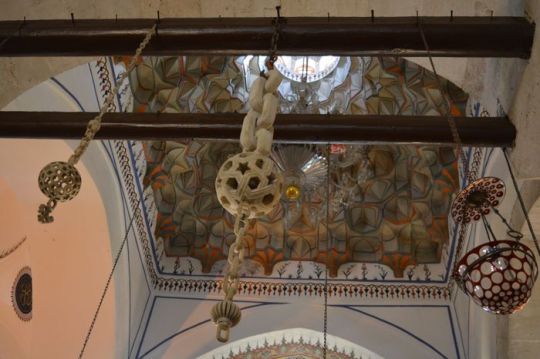
Sultan's Intervention
Upon learning of the remarkable diamond, Grand Vizier Mustafa Pasha expressed interest in purchasing it directly from the Chief Jeweler. However, before he could act, news of the diamond reached the Sultan, who promptly ordered its transfer to the palace. Consequently, the diamond, upon examination, was revealed to be an extraordinary eighty-four carat gem, swiftly seized by the Sultan. As a reward for his role in the acquisition, the Chief Jeweler was elevated to the esteemed position of “Head of the Palace Doorkeepers” and granted several purses of gold.
Historical Accounts
In Komurciiyan’s historical account, reference is made to Gemelli’s narrative from the late 17th century, where it is stated that a diamond found among the ruins of a palace in Egrikapi had come into the possession of Sultan Mehmet, valued at one million koroners. These ruins likely belonged to the Blakerna Palace, described by Robert Clari, a participant in the Latin invasion, as containing magnificent treasures that were looted during the invasion. The mystery of how the Kaşıkçı Diamond survived the plunderers and reappeared centuries later in the dumps remains intriguing Guided Istanbul Tour Whirling Dervishes.
Treasury Records
An important document concerning the Kaşıkçı Diamond can be found in Sultan Mehmet IV’s Treasury register book. The Sultan issued a royal decree for the inventory of items in the Imperial Treasury and a general assessment within the Palace to fund a second campaign against Russia. The register lists various valuable jewelry items, including the “Great Diamond ring” weighing 85 carats, identified as the Kaşıkçı Diamond.
In a more organized register book from Sultan Abdülhamit I’s reign, the diamond is described as the “Great Diamond ring named Kaşıkçı,” weighing 1.85 carats and made of new gold. The entry provides detailed specifications, indicating the meticulous record-keeping practices of the time.
0 notes
Photo
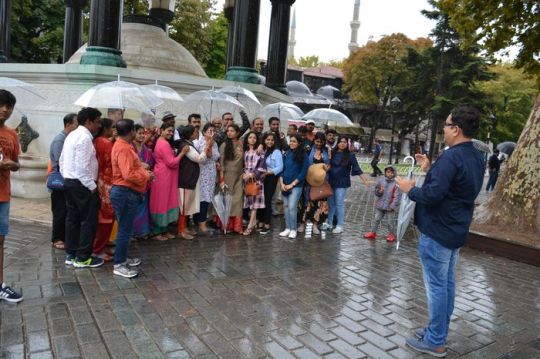
Queen of the Bulgarians
Uncovering the Story of the “Queen of the Bulgarians”
A journey to uncover the truth behind the “Queen of the Bulgarians” reveals unexpected layers of intrigue and tragedy.
Disraeli’s Wit and Turkish Brutality
Disraeli’s astute observation about the Turkish mode of dealing with captives finds grim validation in the fate of these young girls, left abandoned for days on end, a testament to the brutality of their captors Tour Packages Balkan.
A Curious Encounter
In the bustling streets of Philippopolis, tales of a derided “Queen” caught the attention of visitors. Rumored to be imprisoned, she was depicted as a figure of ridicule by the Turks. Intrigued by the mystery surrounding her, a visit was arranged to meet this enigmatic character.
Meeting the Fallen Queen
Led by Dr. Vlados, a Greek physician overseeing the welfare of prisoners, the journey led to a modest dwelling guarded by a stern-faced woman. Upon gaining entry, they encountered a frail figure, presumably the fallen Queen, accompanied by an elder woman, her guardian and protector.
Unraveling the Mystery
The encounter offered a glimpse into the plight of these women, trapped in the web of political upheaval and conflict. As they stood before the visitors, their expressions spoke volumes of their suffering and resilience, shedding light on the human stories buried beneath the layers of political intrigue.
In the heart of Philippopolis, a chance encounter with the “Queen of the Bulgarians” reveals a narrative woven with complexity and sorrow. As the visitors depart, they carry with them the weight of untold stories and the stark reality of human suffering amidst the tumult of history.
0 notes
Photo
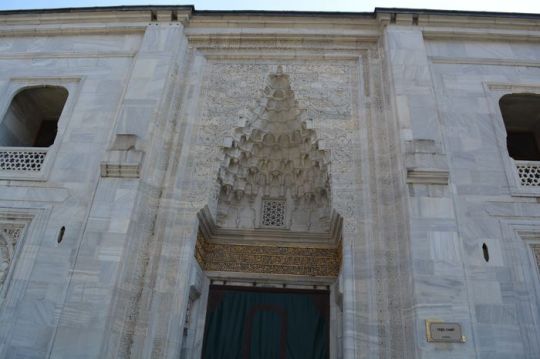
Januarius Aloysius MacGahan A Champion of Justice and Truth
Friendship and Valor in War
After joining the Russian army, Januarius Aloysius MacGahan forged sincere friendships with General Skobelev and General Gurko. He actively participated in all major battles for the liberation of Bulgaria, including the pivotal battles of Plevna and Shipka. His vivid descriptions of these battles stand as remarkable examples of journalism, capturing the intensity and heroism of the struggle for liberation.
Sacrifice and Service
Despite suffering a broken ankle, MacGahan remained steadfastly present at the frontlines throughout the Russo-Turkish War. His unwavering commitment to documenting the realities of war led him to Istanbul, where, exhausted and afflicted with typhoid fever, he passed away on June 9, 1878, at the age of 34. In his untimely death, MacGahan’s destiny became forever linked with the liberation of the Bulgarian people, a cause he served with unwavering dedication Sightseeing Turkey.
Investigating Atrocities
The reports on the April uprising in Bulgaria emerged from a conflict between the British government and the liberal leadership of the “Daily News,” led by Frank Hill, the chief editor. The “Daily News,” renowned for its well-organized foreign service, published a series of letters by correspondent Edween Pears, detailing monstrous atrocities in Bulgaria. These reports stirred doubts among the British public regarding the government’s Balkan policy.
Seeking Truth
To address public concerns and refute government accusations, the editorial board of the “Daily News” launched an inquiry, dispatching Januarius Aloysius MacGahan as a special commissioner to Bulgaria. MacGahan’s impeccable journalistic credentials made him uniquely suited for this mission. Simultaneously, the British government initiated its own official inquiry, led by Sir Henry Elliot and Walter Baring. Additionally, American Minister Maynard tasked General-consul Eugene Schuyler with investigating the atrocities.
Parallel Investigations
MacGahan’s investigation ran parallel to those of Schuyler and Baring. Schuyler and Baring, initially appointed to challenge MacGahan’s accounts, became supportive of his findings. While Schuyler’s report, published on August 28th, corroborated MacGahan’s observations, Baring, guided by a pro-Turkish stance, contradicted his earlier instructions to discredit MacGahan’s reports.
Legacy of Truth
Januarius Aloysius MacGahan’s legacy as a fearless journalist and advocate for justice endures. His courageous reporting and dedication to uncovering the truth about atrocities in Bulgaria not only galvanized public opinion but also reshaped diplomatic discourse. Through his unwavering commitment to truth and justice, MacGahan left an indelible mark on the history of journalism and human rights advocacy.
0 notes
Photo
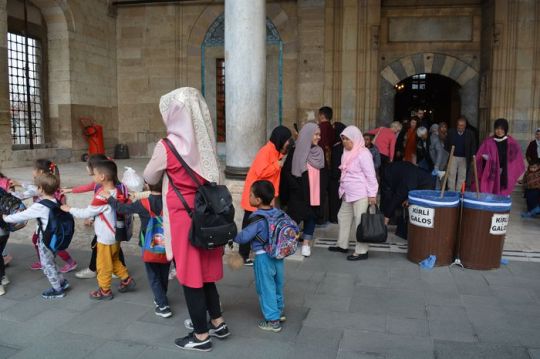
Soviet Influence in the Balkans
The Turning Point
Teheran Conference Decisions (1943)
At the end of 1943, the Teheran Allied Conference made two crucial decisions. First, they approved the bombardment of Bulgaria. Second, Bulgaria and Romania were designated as Soviet zones of interest until the war’s end, effectively placing their fate in Soviet hands. Additionally, the conference chose to support the Communist leader Tito in Yugoslavia over the nationalist guerilla leader Mihailovich.
Bombardment and Soviet Demands (1944)
Following these decisions, Sofia experienced heavy bombardment in January and March 1944, leading to extensive destruction. Simultaneously, the Soviet Union demanded Bulgaria open all of its Soviet consulates, a request impossible to fulfill with German troops still present. Bulgarian guerillas engaged in fierce fighting against the pro-Nazi government Daily Tours Istanbul.
Leadership Changes and Confusion (June 1944)
The Bozhilov government was replaced by Ivan Bagrianov’s administration in June 1944. Bagrianov hesitated for two months on clearing out German forces from Varna and Burgas, trying to prove Bulgaria’s neutrality to the Soviets. The nation faced confusion and weak leadership during these tumultuous days. A Bulgarian delegation went to the Cairo Conference to negotiate an armistice, but the efforts did not progress. By late August, Russian forces, assisted by Romania, reached Bulgaria’s Danubian frontier, positioning the Red Army for an invasion.
Soviet Declaration of War and Occupation (September 1944)
On September 2, 1944, Konstantin Moraviev replaced Bagrianov. On September 5, the Soviet representative met with Moraviev, expressing concerns about vital Soviet interests in the Balkans, especially the Straits. The Soviet representative reported to his government that the new Bulgarian government seemed no different from the previous ones. Based on this, and likely prearranged, Russia declared war on Bulgaria, instructing Marshal Tolbukhin to “bend the neck of the treacherous enemy.” Four days later, the Russians accepted Bulgaria’s surrender, occupying the country with full conqueror’s rights.
0 notes
Photo

Soviet Influence in the Balkans
The Turning Point
Teheran Conference Decisions (1943)
At the end of 1943, the Teheran Allied Conference made two crucial decisions. First, they approved the bombardment of Bulgaria. Second, Bulgaria and Romania were designated as Soviet zones of interest until the war’s end, effectively placing their fate in Soviet hands. Additionally, the conference chose to support the Communist leader Tito in Yugoslavia over the nationalist guerilla leader Mihailovich.
Bombardment and Soviet Demands (1944)
Following these decisions, Sofia experienced heavy bombardment in January and March 1944, leading to extensive destruction. Simultaneously, the Soviet Union demanded Bulgaria open all of its Soviet consulates, a request impossible to fulfill with German troops still present. Bulgarian guerillas engaged in fierce fighting against the pro-Nazi government Daily Tours Istanbul.
Leadership Changes and Confusion (June 1944)
The Bozhilov government was replaced by Ivan Bagrianov’s administration in June 1944. Bagrianov hesitated for two months on clearing out German forces from Varna and Burgas, trying to prove Bulgaria’s neutrality to the Soviets. The nation faced confusion and weak leadership during these tumultuous days. A Bulgarian delegation went to the Cairo Conference to negotiate an armistice, but the efforts did not progress. By late August, Russian forces, assisted by Romania, reached Bulgaria’s Danubian frontier, positioning the Red Army for an invasion.
Soviet Declaration of War and Occupation (September 1944)
On September 2, 1944, Konstantin Moraviev replaced Bagrianov. On September 5, the Soviet representative met with Moraviev, expressing concerns about vital Soviet interests in the Balkans, especially the Straits. The Soviet representative reported to his government that the new Bulgarian government seemed no different from the previous ones. Based on this, and likely prearranged, Russia declared war on Bulgaria, instructing Marshal Tolbukhin to “bend the neck of the treacherous enemy.” Four days later, the Russians accepted Bulgaria’s surrender, occupying the country with full conqueror’s rights.
0 notes
Photo

Sir Henry Elliot's Allegiance Amidst Atrocities
Sir Henry Elliot’s Controversial Role
In the midst of escalating atrocities, the actions of Sir Henry Elliot, the British Ambassador, are scrutinized for his steadfast allegiance to defending the Turks and turning a blind eye to the gruesome events unfolding. This article delves into the sources of information available to Sir Henry and the diplomatic choices that shaped his response.
Defending Turks at All Costs
Sir Henry Elliot’s primary duty, as perceived by many, was to unwaveringly support the Turks, regardless of the atrocities they committed. The analysis explores the impact of such a singular allegiance on the ambassador’s ability to comprehend and respond to the humanitarian crisis that was rapidly unfolding.
Ignoring Weekly Reports from Consuls
A critical examination of the available information reveals that Consuls from France, Germany, Austria, Greece, and Russia submitted weekly reports detailing the unfolding events. Despite the accessibility of these reports, Sir Henry seemingly chose to overlook or dismiss them. The article probes the consequences of such selective information consumption on diplomatic decision-making Bulgaria Private Tours.
Discrediting Consuls and German Railway Officials
Sir Henry Elliot’s skepticism extended beyond dismissing reports from the Consuls; he also discredited the German railway officials living in close proximity to the affected areas. The article explores the implications of Sir Henry’s belief that these individuals were all somehow aligned with Russian interests, rendering their reports “worthless” in his eyes.
Sir Henry’s Allegiance Dilemma
The clash between diplomatic obligations and humanitarian concerns forms a central theme. Sir Henry’s unwavering defense of the Turks, coupled with a distrust of information sources, prompts reflection on the role of diplomats in times of crisis. Can diplomatic allegiance coexist with an ethical responsibility to address human suffering?
Sir Henry’s Controversial Lens
The article delves into the concept of worldview and how Sir Henry Elliot’s staunch allegiance may have shaped his perception of unfolding events. The impact of such a colored lens on diplomatic decision-making and the ability to respond effectively to crises is explored.
Reassessing Diplomatic Values in the Face of Atrocities
Sir Henry Elliot’s controversial stance raises broader questions about the values that underpin diplomatic decisions, especially during times of humanitarian crises. As the world reflects on his actions, there is a pressing need to reassess the balance between diplomatic allegiance and the moral imperative to address atrocities promptly and effectively.
0 notes
Photo
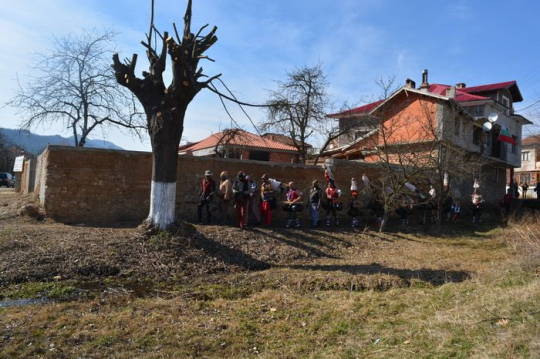
The Lingering Shadows
Shattered Dignity and Collective Guilt in Otluk-kui
As we confront the chilling realities of Otluk-kui, a town scarred by heinous atrocities, the widespread outrage against women unfolds a tale of shattered dignity and the haunting burden of collective guilt.
No Exceptional Case A Town Enveloped in Outrage
The horrors inflicted upon the women of Otluk-kui paint a grim picture of a community ravaged by unspeakable brutality. It’s crucial to recognize that the violation suffered by the elderly woman mentioned earlier was not an isolated incident. In fact, there seems to be no woman in the town, whether old or young, who managed to escape the clutches of outrage. The very fabric of Otluk-kui’s society has been torn asunder by a relentless wave of violence that spared no one.
Shattered Sanctity The Pervasive Perception of Sin
The aftermath of these outrages reveals a curious and profoundly poignant circumstance—the women and girls, victims of these brutal acts, share a collective perception of themselves as “very great sinners.” In the cultural context of Otluk-kui, where the chastity of Bulgarian women is a deeply cherished value, the weight of sin adds an additional layer of torment to the already unimaginable dishonor they’ve endured.
The violation extends beyond the physical realm, becoming a stain on the very soul of the survivors. The notion of sin transforms the traumatic experience into a lifelong penance, an unrelenting burden that, even in forgiveness, leaves the women unable to absolve themselves fully. Every young girl affected by these atrocities foresees a future devoid of marital bliss, considering herself unworthy of finding a husband. The haunting impact is not limited to the female population; the young men of Otluk-kui, too, grapple with altered matrimonial aspirations Holidays Bulgaria.
Seeking Redemption Future Prospects and Altered Relationships
In the wake of the Bashi-Bazouks’ visitation, the young men of Otluk-kui find their matrimonial pursuits forever changed. The once straightforward path to marriage now takes a detour, steering them away from villages tainted by the atrocities. The quest for wives becomes a search for partners untarnished by the shadows of the past. The repercussions of the violences perpetrated against their community ripple through the fabric of relationships, reshaping the dynamics of love, trust, and familial bonds.
Otluk-kui stands as a testament to the enduring impact of violence on a community’s psyche. The shattered sanctity of its women, coupled with the collective perception of sin, paints a portrait of a town haunted by the ghosts of its traumatic past. As we bear witness to the aftermath, we are compelled to reflect on the profound resilience required for healing and the arduous journey towards rebuilding a community shattered by the weight of its collective guilt.
0 notes
Photo

Subjected for Centuries
The truth is, that no other people in the world but these Bulgarians would stand for a day the exactions, extortions, oppression, and tyranny to which they have been subjected for centuries. If it were attempted to introduce into England the system of taxation in use here, the people would rise as one man against the Government. Why, then, should we so blame these poor Bulgarians for doing that which we all would do under like circumstances ; why sympathise with the strong against the weak, when the weak are so evidently in the right ?
PESTERA, August 1.
The task which has been set Mr. Baring and Mr. Schuyler is not an enviable one. They have both gone to work in the most earnest manner, and are visiting all the principal towns and villages that were burnt by the Bashi-Bazouks, in order to see with their own eyes the ruin that has been worked, and to hear with their own ears the stories of the villagers.
This necessitates travelling from five to fifteen hours a day over roads the best of which are nearly impassable for carriages, beneath a burning sun, rendered almost insupportable by the close sultry atmosphere of August. Mr. Baring has already been ill twice, owing to over-exertion, hard work, and the overpowering heat; and even Mr. Schuyler Daily Tours Istanbul, inured to the fatigue of this kind of work by his long journey through Turkestan, seemed to find it as much as he could stand.
But the hard work and the heat, and the wearisome round of. investigation, of questions repeated over and over again, of listening to the same sort of stories told a hundred times over, of sifting and comparing evidence, would be nothing, and might be easily borne.
Mr. Baring and Mr. Schuyler
It is the heart-rending cries of despair that shake you, the crowds of weeping women and children that meet and follow us everywhere—women and children, poor trembling creatures, who are homeless and starving—widows and orphans who are weeping for husbands and fathers slain, and who have not a roof to shelter them, nor bread for the morrow. It is this that makes the task that has been set Mr. Baring and Mr. Schuyler one which they will hardly care to ever undertake again.
We have just passed through the village of Raddovo on our way here, where we stop for the night before continuing to-morrow to Batak. Raddovo was apparently a very flourishing little place, and, to tell the truth, it has suffered less, perhaps, than the majority of the towns that were left to the tender care of the Bashi-Bazouks. It was a village of 160 houses, of which not one is left standing, and the inhabitants are now living under sheds of straw, constructed in nooks and corners of the black and crumbling wralls. They gathered around us when we stopped in the middle of the once flourishing place, and timidly told us their story.
0 notes
Photo

Turkish authorities
I am convinced that not the slightest reliance can be placed in the promises of the Turkish authorities, and that they have no intention of fulfilling their promises when they make them. They are simply made to throw dust in the eyes of Europe, for although they have not patriotism enough to know or care whether they themselves ruin the country or not, they have a very lively fear of a European intervention, and are ready to promise anything to avert it. As for the execution of these
promises they know that can be avoided. As though in very contempt for the promises and assurances given to Mr. Baring and Mr. Schuyler, they are everywhere sending out at this moment, and demanding the payment of taxes in the burnt and ruined villages, just as though nothing had happened Daily Tours Istanbul.
On this village of Raddovp, for instance, a tax of four hundred pounds lias been levied, which it is utterly impossible for the poor people to pay. The pretext for the burning of this village was the killing of two zaptiehs, or rural policemen, here. The inhabitants flatly deny that any zaptieh was killed in or about the village, or that they ever raised a hand against the Turks.
Turks have been killed
As in other villages where Turks have been killed, the people always confess it, I believe that here they tell the truth, and that there was no other cause for the attack than the desire for plunder on the part of the Turks. This is also, I believe, Mr. Schuyler’s opinion. We walked through the village, which presented a sad spectacle of ruin.
Many of the people seemed to have returned, each family, to the blackened walls of their former homes, where they had constructed in the corner of the walls a sort of shelter with the aid of a few poles and a little straw. Some had a coverlet or two, others straw to sleep on, and many seemed to sleep on the bare ground. I saw one sick woman groaning with pain, lying with only a thin coverlet between her and the damp ground, while a little girl sat beside her and continually bathed her head with cold water.
0 notes
Photo

Mudir or Turkish governor
There was no Mudir, or Turkish governor, in the village at this time, so they had matters all to themselves, and nobody to interfere with them. They immediately proceeded to fortify the place, and they do not seem to have had any other plan for the insurrection than that of waiting quietly in the village, and defending it against all comers.
This seems to have been the plan adopted in the three or four villages where a rising really took place; and a more foolish one could hardly have been imagined. Instead of young men in each village forming themselves into flying bands, and traversing the country in every direction, destroying the railways, cutting the telegraphs, surprising small posts of Turkish soldiers, and avoiding contact with large bodies of troops, each of these villages having thrown off the Turkish authority in the manner above described, adopted the mad plan of defending itself separately and singly against the regular troops.
This, together with the fact that the rising only occurred in three or four- places, and not simultaneously in these, would seem to indicate that the members of the Bucharest Committee were very raw hands at organizing an insurrection, and that their organization was very imperfect, if indeed there were anything like organization at all Sightseeing Turkey.
They seem to have persuaded these three or four villages to rise, hoping that the rest of the country would follow the example, and that there would be a general insurrection as a matter of course. But the rest of the population, without leaders and without organization, remained inactive, and allowed themselves to be quietly slaughtered. There is little doubt, in my mind, that if the rising had been general, properly organized and provided with leaders, the Turks would have been obliged to abandon the whole country north of the Balkans, and withdraw to Adrianople.
0 notes
Photo
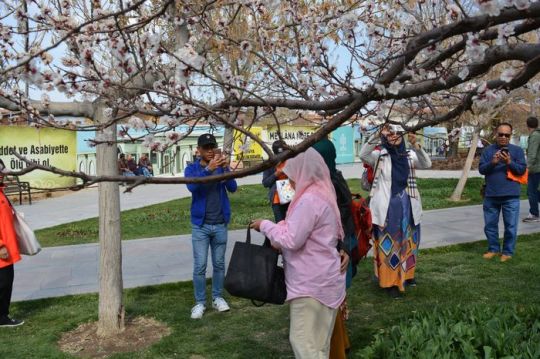
Pomaks or Mohammedan Bulgarians
Shortly afterwards seven more Turks, who approached the village, were ordered to surrender, and did so at once. These were two zaptiehs, two tax-collectors, one clerk, and two pomaks or Mohammedan Bulgarians. They were all lodged in a Bulgarian house and well treated, except one of the zaptiehs or mounted police of the country, who had committed such acts of cruelty and barbarity that they decided he had merited death, and therefore sentenced and shot him.
A day or two later some people in a closed carriage, approaching along the road towards the fortifications, were hailed and likewise ordered to surrender, and upon their attempting to escape were fired upon. The carriage was captured, and it was found there were two men and three women in it. The two men and one of the women had been killed by the fire ; one of the remaining women seized a sabre and struck at one of the insurgents, whereupon she was killed. The other woman was captured and sent into the village Sightseeing Turkey, and well treated until the arrival of the Turks, when she was set at liberty.
As far as wre have been able to learn up to the present, those two women are the only ones that have been killed by the insurgents, and one of them, as I have just related, was shot accidentally. The Turkish authorities in Philippopolis state that there were twelve killed in all; but they have been unable to give Mr. Schuyler either the names of these women, or the names of the villages in which they were said to have been killed, and he therefore will not accept the statement until he finds further proof.
Kiani Pacha, who was sent here to inquire into the atrocities committed by the Baslii-Bazouks, told Mr. Schuyler, with the coolest assurance, that the wife and daughter of the Mudir of Avrat-alan had been killed. Mr. Schuyler found, upon investigation, that the wife of the Mudir had not been killed, and that he never had a daughter. It was said that the wife of the Mudir here in Otluk-kui had likewise been killed.
0 notes
Photo

Glimpses of the History of Bulgaria
Then three schools were set up and soon hundreds of enlightened Bulgarians came out if them. Having the ruler Boris I behind his back Clement built a monastery in Ohrid, Macedonia, improved the Glagolitic alphabet and named it after his teacher Cyril – Cyrillic alphabet. For those merits Clement of Ohrid received high recognition and even today the University of Sofia bears his name. The other disciple of Cyril, Naum, led the second centre of enlightenment in the capital Pliska which was focused mainly on literary activities. There were laid the foundations of a literature which could be compared to the Byzantine and in that initiative took part the son of Boris I, Simeon, to whom Fate had allotted a great future…
Relics from Veliki (Great) r re Slav, the second capital city oj the Kingdom established by Boris l in 893.
After the death of Naum in 910 both disciples were canonized as Bulgarian saints . These men had a substantial contribution to the spiritual, cultural and intellectual development of the First Bulgarian Kingdom, to the raising of Bulgaria as a spiritual leader of the Slav community and to the cultural advance of Medieval Europe as a whole. Under the influence of Christianity and the Slavic script by the end of the 9th century the Bulgarian nation was ultimately formed and the Bulgarian state was consolidated.
The “Golden Age” of King Simeon the Great
After Prince Boris I retired on his own will to a monastery in 889 his first-born son Vladimir sat on the throne. Soon it came clear that the new ruler had a different vision for the religious and cultural future of the country: he wanted to restore paganism and did not hesitate to reaccept his pagan name Rassate. At hearing about this Boris left the monastery, dethroned his son and blinded him, then handed the crown to his second son, Simeon (893-917). Meanwhile, in 893 he shifted the capital city from Pliska some forty kilometres to the south-west and established Veliki (Great) Preslav which remained as a capital city until 972.
0 notes
Photo

Travellers should examine all change
Travellers should examine all change tendered them, and refuse all worn and light coins.
Foreign Coins.—Gold coins of any European country pass current in Constantinople. Those most in use are the English sovereign, better known as Ingliz Lira, given and taken at 120 piastres silver value. And the foreigner tendering an English sovereign or half-sovereign will do well to call attention to the coin, otherwise it may be taken for a Turkish lira or half lira, which of course are of less value. Next come the gold twenty and ten franc pieces, given and taken at 95 and 47J piastres silver respectively. The Austrian ducat or kremitz is valued at 56 piastres silver.
The silver francs are worth 4 J piastres; the only ones to be taken or given by travellers should be the French, Italian, and Greek silver francs; those of any other European nation are with difficulty exchanged at the rate of 3 or 3 J piastres.
Bank of England notes for £5 and £10, and French Banque de France notes for 100 francs, are taken everywhere in payment, and are readily changed by the money-changers.
Legal Tender.—There is practically no such thing as legal tender in Turkey, and payment may be made in coins of any current denomination. In all the Government departments, however, as well as at the bridge toll-offices, and ferry-boat and railway booking-offices, only Turkish money must be tendered guided istanbul tour.
Imperial Ottoman Bank
Banks.—Imperial Ottoman Bank, an Anglo- French company founded by Imperial Charter, a large building in Rue Yoivoda, Galata. Branch office, Grande Rue de Pera. The Credit Lyonnais, branch office, in Karakeui. Messrs. Thomas Cook and Sons, 12 Rue Kabristan, Pera. At this latter firm’s office travellers always can get circular notes issued or cashed, and bank notes changed into any kind of money they may require at the time.
Sarrafs or Money-changers.—These are one of the special features of Constantinople and of all Turkish towns. Their name is legion; they are to be found in all the principal thoroughfares, and they generally combine their special calling with that of tobacconist. The charge for giving change varies
with the nature of the change demanded of them, and may range from Id. to 5d. in the pound. They are either Jews, Greeks, or Armenians, no Turk having yet been seen or heard of following the calling of a sarraf.
The Turkish Calendar.—Turkish chronology is computed from the flight of Muhammad from Mecca to Medina, on the 16th of July 622 A.D., which on the prophet’s death seventeen years later was established as an era by the Caliph Omar, and was styled the Hejreh (Flight), corrupted by Europeans into Hegira. The Turkish year is the lunar year, divided into twelve months of thirty and of twenty-nine days alternately, so that there are 354 days in a year, and each year commences 11 days earlier than the preceding one, a cycle occurring once every thirty- three. years. Turkish time is computed from sunset, the day being divided into twenty-four hours counted as twice twelve; Turkish time, therefore, as com-pared with European time, varies throughout the year. Natives generally set their watches by Yeni Valideh Mosque clock.
0 notes
Photo

ALPHONSE DE LAMARTINE COLLECTION
(Georgi Mavridi House) 19 Knyaz Tseretelev Street
This small but memorable exhibition of the life and work of the eminent French poet and politician is arranged in the house of Georgi Madridi. In the summer of 1833, during Lamartine’s travels in the Orient, he stayed here for three days and since then the house has been associated with his name. Mavridi’s House is one of the biggest and most beautiful in Old
Plovdiv. An unknown master-builder has managed to overcome the difficulties posed by the sloping terrain in a brilliant way. The foundations and the ground floor of the house have an irregular outline while the two upper floors have the typical symmetrical plan. Each of them juts out over the floor below which considerably increases the living area of the house by adding to its height. People compare it to a bird spreading wings before flying off, an effect achieved by its position on the corner of Zora and Knyaz Tseretelev streets and by its being in good sight from the foot of Jambaz Tepe bulgaria holidays.
THE ‘HIPPOCRATES’ PHARMACY COLLECTION
(Dr. Sotir Antoniadi House and Chemist’s, 16 Saborna Street)
The comparatively small two-storey Revival house is the site of a rich collection dedicated to the history of pharmacy in Plovdiv and the area. The house was built in 1872 for Dr. Sotir Antoniadi – a notable representative of the Greek ethnic community in Plovdiv, one of the first academically trained doctors before the Liberation. The Georgi Mavridi House, site of ‘Alphonse de Lamartene’ collection.
Dr. S. Antoniadi House – the old-world ‘Hippocrates’ Pharmacy.
building has an asymmetrical plan and is quite solid. The pharmacy was on the ground floor and the doctor’s family lived on the upper floor.The ceilings of the house are plastered and decorated with painted rosettes and plant ornaments. The museum pharmacy was opened in 1981 and is unique for the country. It is a truthful representation of the typical Plovdiv pharmacy of old times and has a functioning counter for the purchase of contemporary medicines.
CITY ART GALLERY
(The former Girls’ School)
14 Saborna Street
The distinguished-looking building of the former Girls’
Secondary School of Plovdiv now houses the permanent exhibition of the City Art Gallery. Over BOO paintings, graphics and sculptures show the development of art from the time of the National Revival to our days. One can see here the oldest portrait in Bulgarian art, executed by an unknown artist from Tryavna, of Sofronii Vrachanski as well as works by Stanislav Dospevski, Nikolai Pavlovich, Georgi Danchov, Anton Mitov, Hristo Stanchev and Ivan Mrkvicka.
The exhibition traces the development of the genres of still life, landscape and figured composition from the end of the 19th and the beginning of the 20th c. to our time. The work of painters from Plovdiv is extensively displayed, starting from the establishment of the ‘Association of the Artists from Southeast Bulgaria’ in 1912 to the present day.
0 notes
Photo

Rhodope architecture
Tourist attractions: The District History Museum, the Art Gallery, monuments of Rhodope architecture from the National Revival period such as the Pangalov House, I860, which has an ethnographic collection, the AUbeev Police Station, the Shere- metev and Petko Takov Houses.
The only feudal building preserved in Bulgaria — Agoushev House in the village of Mogilitsa, 28 km southwest of Smolyan in the valley of the River Arda.
Hotels: Smolyan, 3 stars, 5 floors, 169 double rooms and 7 suites; restaurant, day bar, night club, national restaurant, hairdresser’s, coffee shop, free shop, parking lot, rent-a-car office, tel. 3-81-76, Sokolitsa, 2 stars 10 floors, accommodating 194, tel. 3-30-85; Orfei, 3 stars, tel 3-20-41, accommodating 170, restaurants and a national restaurant private turkey tours.
Smolyan lakes are north of the town amidst picturesque rocks and coniferous forests. There is a modern chalet accommodating 80.
The village of Shiroka Luka (pop. 2,000), is an architectural and ethnographic reserve. Particularly interesting here are the Sgourov House, Kalamdji House (with an ethnographic collection), the Kirov Houses, the old bridges, Church of the Assumption, 1834.
The village has a folk-music school, There is a restaurant, a national taverna and tourist chalet.
PLOVDIV – HASKOVO – HARMAN LI – SVILENGRAD- KAPITAN ANDREEVO
Among the valley of the Maritsa River, three km from Plovdiv stands the monument to Olga Nikolaevna Skobeleva, mother of the famous Russian General Skobelev who fought m the 1877-1878 Russo-Turkish War of Liberation, who came to Bulgaria to organize orphanages, hospitals and charity societies and who was murdered near Plovdiv by a band of Circassian brigands on 6 July 1880. The monument marks the spot.
Between Plovdiv and Sadovo is the Trakiya motel, 2 stars, and Chaiya camp site, 2 stars.
The village of Klokotnitsa lies ten km from the town of Haskovo and here in 1230 Bulgarian troops led by Tzar Ivan Assen II defeated the Epirate ruler Todor Komnin. The Bulgarian troops continued their advance and in a short time had captured Thrace of Adrianople, the Aegean region, the whole of Macedonia and Albania. In honour of this victory Tzar Ivan Assen II ordered a column to be erected in the Church of St Forty Martyrs in Turnovo. Shortly before Haskovo are the Iztok camp site and Klokotnitsa Inn.
Haskovo (pop. 84,117) existed in the 14th century as a trading settlement. A 9-12 century fortress has been discovered nearby. During Ottoman domination the town had only one Bulgarian quarter, near the Church of St Virgin Mary and the Church of St Archangel Michael After Bulgaria’s liberation from the Turks Haskovo developed as a major tobacco producing centre and today it is a large industrial centre.
0 notes
Photo

Rila Monastery
Rila Monastery has been included in the World Cultural Heritage Fund and is under the protection of UNESCO
The new Hotel Rilets — (three star) has 14 single rooms, 64 double rooms and 5 suites. There is a drag lift near the hotel.
country. It is situated on the banks of the Blagoevgradska river. The town was built on the ruins of the ancient Thracian town of Scaptopara (3rd century B.C.), traces of which can still be found. The town was later destroyed to be rebuilt again in the 16th century under the Turkish name of Djoumaya (Market), It was a trading centre on the road leading south along the valley of the river Strouma.
Blagoevgrad is an industrial centre
Today Blagoevgrad is an industrial centre and potential for development. Around the town are mineral springs which were famous even in ancient times. The temperature of the water is around 60°C. There are two modem hotels, Alen Mak — (three star), with 22 single and 138 double rooms and two suites, restaurant, bar, and souvenir shop; Hotel Bor — (two star), with 29 double rooms, four apartments, restaurant. There is a car service rooms, four apartments, restaurant. There is a car service station on the road to Sofia The address of the District Council of Motorists is 6 N. Vaptsarov, tel. 5544. The town of Smith (population 6,500) is 17 kilometres to the south and has 30 hot springs with water temperatures round 60°C. From here a road forks left to the picturesque mountain towns of Razlog (population 17,000) and Barnko (population 12,000) in the foothills of the Pirin Mountains. Original buildings architectural interiors have been preserved in Bansko. It is the birth place of the founder of Bulgaria’s Revival, Paissi of Hilendar (1723) and of the eminent Bulgarian poet and revolutionary, Nikola Vaptsarov, whose house is now a museum. Of particular interest are the old houses of Todev, Sirleshov and Vilyanov sofia city tour, as well as the Church of the Virgin Mary built when Bulgaria fell under Ottoman domination. During the second half of the 18th century an unknown wood- carver made the iconostasis similar in artistic merit to that of Rila monastery The new Church of St. Trinity differs from other Bulgarian churches. Its architecture is reminiscent of Italian belfries although it was built by local masters. Its murals are the work of Dimiter Molera and Belyan Ognev. The Belfry and the Clock Tower were erected in 1846 to the desjgn of the local master Gligor Iyov, Todor Hadjiradanov from Bansko was the clock maker.
Other prominent Bulgarians are also associated with Bansko. In 1896 the Bulgarian revolutionary, Gotse Delchev, taught here. For four months he lived in Todev’s house whence he directed preparations for the 1903 uprising of Macedonia.
Visitors can stay at the Balkantourist Pirin Hotel which has 103 rooms and five suites, restaurant and night club. There is also a hostel with accommodation for 150. Bansko is a good starting point for exploring the Pirin Mountains.
0 notes
Photo
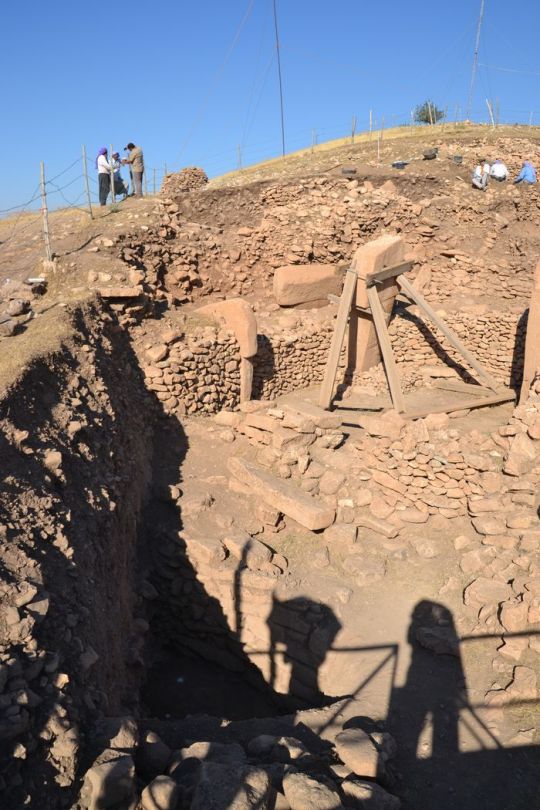
The region of Kolarovgrad
The region of Kolarovgrad provided a most important find in recent years — a settlement of the type of Pliska was found at the village of Tsar Kroum (Chatalar) not far from Preslav. This is the place where the column with the inscription of Omourtag’s day, mentioned above, was found. The main resemblance to Pliska lies in the fact that we have here an outer earthen fortification, although on a far smaller scale than that of Pliska(515x 405 m.), and an inner stone fortress measuring 110×93 m. This may have been the palace, the military camp, which Omourtag built and ornamented with columns and the statues of two lions, as the Chatalar Column mentions.
A most important document has come down to us from the period of the greatest flowering and prosperity attained by the medieval Bulgarian state at the end of the 9th and in the 10th century: John the Exarch’s Hexameron. Here we find a most interesting description of Preslav, the second capital of the First Bulgarian State: «When a peasant, a poor man and a stranger, cometh from afar to the towers’ of the Royal Citadel (the Inner City) and perceiveth them, he is filled with amazement private tours istanbul.
And when he advanceth to the gate, he marvelleih and asketh, and upon entering within he perceiveth on both sides large buildings of stone, and ornamented with wood and other materials. When he entereth the Royal Palace and perceiveth all buildings and churches, decorated with stones, wood and paintings, and within with marble and copper, silver and gold, he knoweth not wherewith to compare them, for that he hath not seen such a thing in his land, except thatched huts — and the poor peasant loseth his mind in wonder.»
Excavations at Preslav
Excavations at Preslav, particularly in the last few years, have not only confirmed the truth of this description, but supplemented it as well. To this day, the monumental foundations of the royal palace still stand forth among the numerous ruins in Preslav; it was built of large, well-hewn stone blocks. The ruins of a 10th century church, highly original in plan, are also visible; it consists of a rotunda, a narthex and an atrium, the wall surfaces of which were highly broken up. Its polychromous interior ornamentation, with coloured marbles and wall mosaics on a gold background, and coloured faience tiling, harmoniously supplemented the rich variety of wonderfully light and ethereal forms of the interior.
With regard to plan, Preslav followed the town-planning principles applied in Pliska. Here too the «Inner City» was separated from the «Outer City» by strongly fortified walls, which defended the royal district. However, the «Outer City» was not fortified with a moat, and earthworks as at Pliska, but with a thick fortress wall, which surrounded an area of only about 3.5 square kilometres. Moreover, the fortress wall most certainly did not surround the entire «Outer City».
0 notes